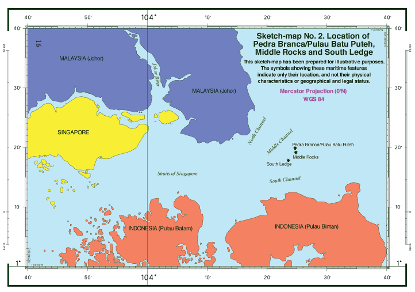Introduction
The international climate change law regime is a dense arc of diverse treaties and customs, though this arc does not guardrail the State abuse of the environment. The States’ arguments that puncture this dense arc are those emanating from State sovereignty and state consent. This myopic statist view of climate change regime has been popular since centuries. The International Court of Justice, in its ‘Advisory Opinion on Obligations of States in respect to Climate Change’ on 23 July 2025, altered this view immeasurably. Though it would not be possible, at the moment, to know the legal ramifications of it in the coming years, one can gauge them on the basis of the significant changes that the Opinion brings. This post aims to weigh the legal and sentimental weight of this Advisory Opinion, and its deviation from the mainstream State-centric view of international law.
Weighing the Advisory Opinion
Widely described as ‘long-awaited’ ‘historic’, and ‘landmark’, the fifth unanimous Advisory Opinion, Advisory Opinion on Obligations of States in respect to Climate Change was delivered by the International Court of Justice (ICJ) on 23 July 2025. Following the recent theatre of opinions by the regional and international courts and tribunals—International tribunal for the Law of the Sea on 21 May 2024, the Inter-American Court of Human Rights on 3 July 2025, the awaited African Court on Human and People’s Rights, the ICJ dealt with layered and dense legal questions. It primarily dealt with a set of two extensive questions: first, questions of State obligations in relation to climate change under various human rights, environmental and climate change international law, and customary international laws (such as duty to cooperate), and second, the questions of legal consequences arising from various States’ acts and omissions (including questions relating to attribution and causation, and the duties of performance, cessation, non-repetition, and reparation including restitution, compensation and satisfaction). It also engages with complex issues such as the State responsibility in cases of cumulative causes such as the Green House Gases’ emission.
In its eighty years history, the ICJ has delivered 30 Advisory Opinions (AOs) so far and none of its AOs garnered as much attention from scholars, practitioners, international organizations (such as IUCN and many others), and media as the 2025 AO on climate change did. While it is being applauded from various entities of the international society, it might not be equally praiseworthy for the States.
Though accolades are pouring in from all directions on its legal, political and social relevance, this post views its significance broadly on two axes: first, its legal (and political) weight, and second, its sentimental weight (political, legal and social).
Legal weight
The elements of the AO that weigh it heavy on its legal ramification may be seen through the following.
First, in terms of a coherent interpretation, it trims the isolated, detached, competing rough edges of various international laws related climate change, environmental, and human rights. The capitalist-developmental urge of the States deflects them from consenting to the treaties on climate change, and if consented to, then to view them in isolation. Even against the otherwise obvious logic, States view the human rights and environmental laws in detachment, giving piece-meal interpretations intentionally to suit and guard the State excesses. These two angles are addressed by the present AO with legal and substantive clarity. The AO foreground human right to life relationally to the climate change from Article 3 of the Universal Declaration on Human Rights (UDHR), Article 6 of the International Covenant on Civil and Political Rights, and Article 6 of the Convention on the Rights of the Child (CRC) (para 377) and Article 12 of the International Covenant on Economic, Social and Cultural Rights (ICESCR) (para 379). In the backdrop of the climate crisis, it highlights the common ground between environment and human right to health through coinciding Article 11 of the ICESCR and Article 25 of the UDHR (para 380), and Article 17 of the ICCPR, (the ICJ relied on the clarification offered in Daniel Billy and others v. Australia in para 381). Eventually, it establishes right to clean, healthy and sustainable environment as a pre-condition to many human rights. It then draws interpretational coherence among the Charter of the UN, United Nations Convention on the Law of Sea, Paris Agreement, UN Framework Convention on Climate Change (UNFCCC), and other climate change and environmental treaties.
It also clarifies that the “application of the lex specialis maxim does not result in a general exclusion by the climate change treaties of other primary rules of international law” (paras 171, 411, 412, 413).
Second, its departure from State centrality. The legal opinions sought in most previous occasions were centered on States including, admission of ‘states’ in 1948 and in 1950; interpretation for ‘State’s’ obligations in 1950 and in 1980; reservation of ‘states’ to a Convention in 1951; use of nuclear weapons by ‘States’ in 1996; territorial and other disputes ‘States’ like Palestine and Israel in 2004 and in 2024), South West Africa in 1950, in 1955, and in 1956, and in 1971, on Western Sahara in 1975, on Kosovo in 2010, and on Chagos in 2019). The present AO embodies the concerns of individuals more than those of States. The present AO also looks beyond the international law’s reliance on State or the consent-based international law. It succinctly notes the customary obligations of the State regardless of whether a State is a party to the climate change treaties (para 315). Further, relying upon the AO on Legality of the Threat or Use of Nuclear Weapons, the AO categorically moves beyond the ‘trans boundary’ and ‘cross-boundary’ harm, rather focusses on a cumulative global harm. The avoidance of tuning the environmental harm to imperatives of State and its boundary (‘transboundariness’ of environmental harms), and therefore avoiding the legal dogmatics and statist myopic interpretation is extraordinary.
The AO frees the climate change customary obligations of the State from the clutches of State consent. This makes a significant departure (apparently, only in cases of climate change though) from the State centrality that often daunts the international law.
Third, its foregrounding of the customary rules of international law in matters of environment and then blending of treaty obligations with the customary laws. ICJ emphatically noted in a separate paragraph (para 308), “Climate change is a common concern. Co-operation is not a matter of choice for State but a pressing need and a legal obligation”. Further, unlike the ordinary situations where the separate existence of treaty and customs as two distinct sources exists (para 310), the AO underscores that the treaty and custom relating to climate change are held together by a common thread of norm (para 311). It highlights the common principle from which the treaty and custom on climate change emanate (para 312). Their coinciding normativity demands them to be read together. The AO notes that the States’ compliance in good faith with the climate change treaties would ensure their compliance with their customary duties to co-operate, due diligence, and prevent significant harm (para 314). It underlined that “treaties and customary international law inform each other” (para 314). It emphasizes on the binding obligations of the customary duty to prevent significant harm to the environment by acting with due diligence and the duty to co-operate with each other in good faith to prevent significant harm to the climate.
Fourth, its departure from positivism. Broadly, the legal positivism emphasizes on State as sovereign, and the international legal positivism emphasizes on ‘State sovereignty’, ‘state-consent’ and state as the primary actor and source of law. Positivism is the lingua franca of international law community including lawyers and judges at the ICJ. The centering of the positivist elements—of ‘identifiable’, ‘ascertainable’, and ‘valid’ legal rules— and the reliance of positivist method of determinacy, and ascertaining and qualifying a norm as a legal rule, can be discerned from the ICJ cases. The AO departs from positivism (in its elements and methods) in several ways including, its departure from State centrality, and State consensuality in international law (in its observations on erga omnes which is excluded from the otherwise implicit consent-based customs); its centering of customary law (and at par with the treaty law) and therefore, of legal indeterminacy as opposed to the legal determinacy cherished by positivism; its departure from the positivist law-as-panacea syndrome (by acknowledging international law’s limitation in para 456); its foregrounding of the natural human will and wisdom (para 456); and its acknowledgment of meta-legal redressal of the climate change (para 456). The AO’s finding on the customary international law in a manner beyond the general state acceptance, makes a departure from positivist legal determinacy, objectivity, and state consent to naturalism. Though the AO relies on positivist methods of determining and relying on legal rules and principles but at the same time, it makes naturalist inroads into the otherwise inevitable, intransient and omnipresent positivism. At the most fundamental level, the AO has created conceptual space for departures from positivist elements and methods for a domain (climate and environment) that had been abused by the consensual positivist allowances to statism.
Sentimental weight
The present AO is unusually personal to most of the scholars, practitioners, activists and others. At least three aspects of this AO on climate change place it at a different footing than any other AO previously delivered by ICJ, and explain its personal, emotional and sentimental weight.
First, most of the previous AOs arose from either legal, substantive and procedural, enforcement and implementation related questions; unlike the present AO that, in addition to bringing legal, substantive and enforcement clarity, has emotive and sentimental moorings. Every previous AO mattered to the States, or to the individuals in the service of the UN, i.e., to the “entities those matter”. Though the request was made by Small Pacific Islands, spearhead by Vanuatu, and routed through the General Assembly on 12 April 2023, the AO on climate change is built by them who “do not matter” and are invisiblised by States and international law, while are disproportionately burdened by climate and environmental inequalities.
Second, this is the first time when the focus of ICJ’s AO was not pivoted to a State or a Statist concern (barring a few AOs on service-conditions of individuals working within the United Nations), rather it concerns itself with a transcending—literally and figuratively—legal question. This concern was not the concern of the States, this was the concern of individuals that the State holds, and engulfs within its mega narratives. Environmental and climate concerns do not bother the State trapped within the developmental State’s body. The modern and neo-imperial developmental State willing to sabotage and erode ‘it’s’ climate, and the human rights to climate of the individuals ‘it’ embodies, largely remains unbothered by the climate crisis. Climate does not concern the State; it concerns the individuals.
Third, unlike most previous AOs that emanated from horizontal plane of interactions between States and International Organisations, its traction has come from below, rather beneath. The traction, came from not merely ‘individuals’, but from remote and marginalized indigenous communities (see also this), children, university students, a young activist teen, civil groups (like the Pacific Islands Students Fighting Climate Change) and others. Additionally, the AO has particular sentimental value for the ‘smaller’ states—those that are ‘insignificant’ in the power asymmetries of the world. Further, for the post-colonial States, the AO was a battleground of the old development versus environment debate. The fact that those who share disproportionately higher environmental burdens and are most vulnerable—the people and the ‘Small’ Island States— took the global concern to the highest court of international law, one that was more accessible to the advantaged and developed States of the world, is remarkable.
Final remarks
The AOs of the ICJ, otherwise non-binding and carrying less legal weight, are authoritative sources of international law. And the present AO on climate change is altogether different in its legal and sentimental weight on the international society and otherwise. It brings remarkable changes to the way state obligations (treaty and customary) to climate change are viewed; and a coherent and coinciding interpretation of several human rights, environmental and climate change laws. Besides these huge, but apparent and obvious changes, it will change the way AOs are viewed. The degree and gravity of attention it has garnered, and legal and political ramifications it will unleash, will alter the way scholars and practitioners place AOs in the hierarchy of international laws and their authority.
The AO has thoroughly reset these climate-related legal and, to an extent, political issues anchored in the existing state-consent based international legal system. This omnipotent and omnipresent anchor, if not uprooted, has been shook. This also sheds the critical, non-positivist, non-statist impulse that the AO centres on the canvass of international law. The future trickle downs of this AO to the regional and domestic courts will further compliment, question, critique and dismantle—and therefore, usher new interpretations of this AO and on the larger canvass of climate change.
Author
Swati Singh Parmar is an Assistant Professor at Dharmashastra National Law University, Jabalpur, India. Her interests include international legal theory.





